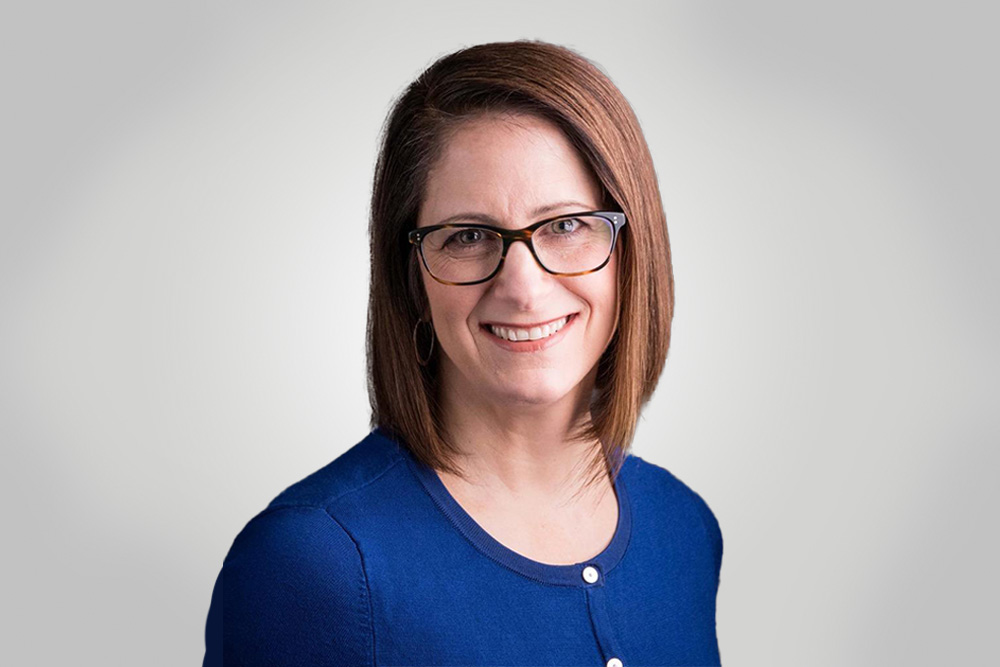In the latest installment of our Senior Advisor Interview Series, we sat down with Juliana Vida to discuss her path through the military as the former Navy deputy chief information officer up to her current role as vice president and chief strategic advisor for the public sector at Splunk, a U.S. based software platform. Vida also touches on the unique perspective she brings to leadership, and how she advises organizations and their teams on the most pressing technology challenges they face.
Overcoming deficits in the understanding and adoption of new technologies is one of the underlying challenges leaders and their teams have faced in recent years. Juliana Vida, a new senior advisor at McChrystal Group, brings with her decades of experience of helping organizations in both the private and public sectors better understand and leverage their data and technology. In the following Q&A, Vida discusses her own progression as a thought leader in the field, how she goes about communicating the importance of technology in the workplace, and what teams can do to better adopt and improve processes when it comes to technology.
Q: Over the course of your career in the military and now the private sector, how have you seen the definition and perception of leadership progress?
A: In my opinion, there is no one blueprint for leadership. But I would say that there are some assumptions and stereotypes about what a good strong leader looks like. And generally, people that look like me aren’t put into that bucket, though that is changing, and I am excited to be a part of that change.
There are more women admirals, generals, senior executives, commanding officers, and senior leaders. But it’s far from equitable. For a long time, I, like a lot of my peers, like a lot of women my age and younger, undervalued my own unique contribution.
I want to continue to be part of that voice that people are seeing, the example that others are hearing from and learning from, because that’s how we change paradigms.
Q: How did you hone that message and how do you go about communicating the importance of being yourself no matter what group of people you’re put in the room with?
A: I was well into my career in the military when I started just learning from a new set of people and realized that I needed to surround myself with a different set of peers, mentors, and coaches to help get me out of the mindset I had been in for years. It stemmed from relying on people, leaning on people, reading books that they recommended, going to events that they recommended. That’s when I started to get confident about my unique contributions and that I should be vocal about things that matter to me.
That empowered me to speak about topics that I do have expertise in because I finally got the confidence to talk about my own contributions and how they are relevant to technology, and also relevant to just being a leader in the world.
Q: You blend your knowledge of leadership and people with technology. What’s your approach to ensuring organizations are moving at a pace as they adopt new technologies and certain individuals or teams aren’t left behind?
A: People at the higher levels, think middle management or above, aren’t generally comfortable saying they don’t know things in public, or even in their small groups. They aren’t going to ask questions. I try to be a feeder of information and guidance because I know people are hesitant to ask, and the more I can feed this notion of whatever position you are in the organization, you too can be conversant in technology and the cloud and artificial intelligence.
I try to push information out to make people feel comfortable. They appreciate that because nobody wants to expose themselves in front of their peers or their competitors. They’re happy to be educated in a caring, open, authentic kind of way.
Q: What do you see as the biggest challenge organizations face when it comes to technology and adopting new processes?
A: There’s a lot of technology understanding debt. We are so far behind. We waited, and I say we as a country, we as military ,we as industry, we as educators, have waited way too long to teach people the basics about what technology to use, how to use it, what investments to make. As a result, we are playing catch up when it comes to technology.
When you have organizations that have people from their 20s to 60s, there’s a huge range of knowledge and experience and exposure to any level of technology, and it is shockingly still low. And that’s a big problem because then when you put people from different backgrounds into a work environment where they still may be working on older legacy technology, combined with the lack of learning and awareness of how to be smart about using it, and then you pile those on top of each other and it’s a perfect storm.
Q: What is your message to leaders at organizations who want to see the culture of technology adoption and literacy spread throughout their teams?
A: It starts with ensuring they have a culture and an understanding of what process improvement they are striving for in the first place. If there is not a clear vision or road map first, that is where I start. Trying to facilitate a conversation that gets them thinking about that. Getting teams to think of one or two things that are a common pain point for everyone that they can work on, or a common strength for everyone that they can then amplify.
Not all organizations are even aware of where to start or what their culture is other than a realization of, ‘Wow, it’s really hard to work here and we have people leaving and we don’t know why.’ That’s why taking big problems and breaking them down into small chunks is so important.




